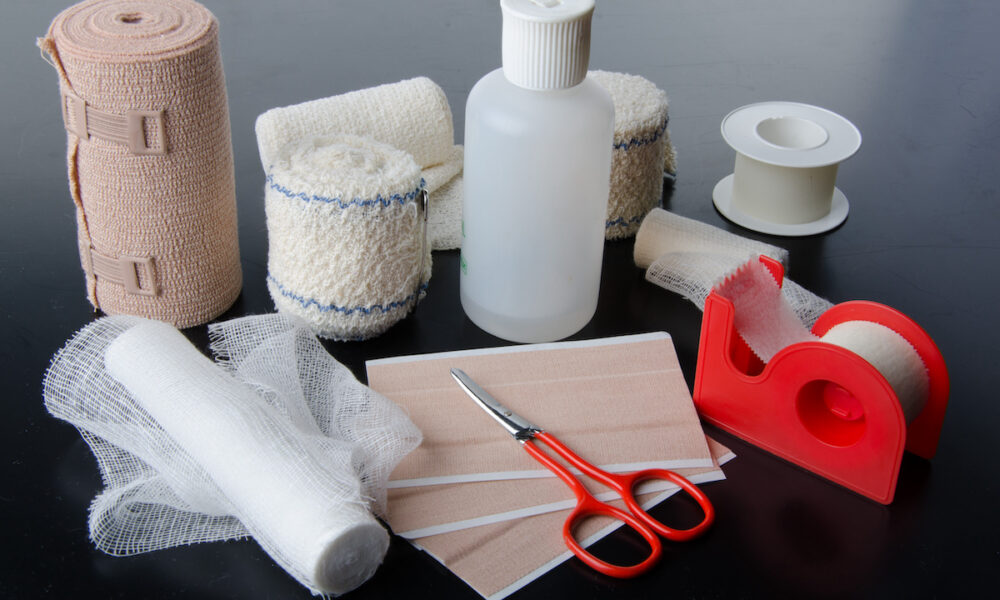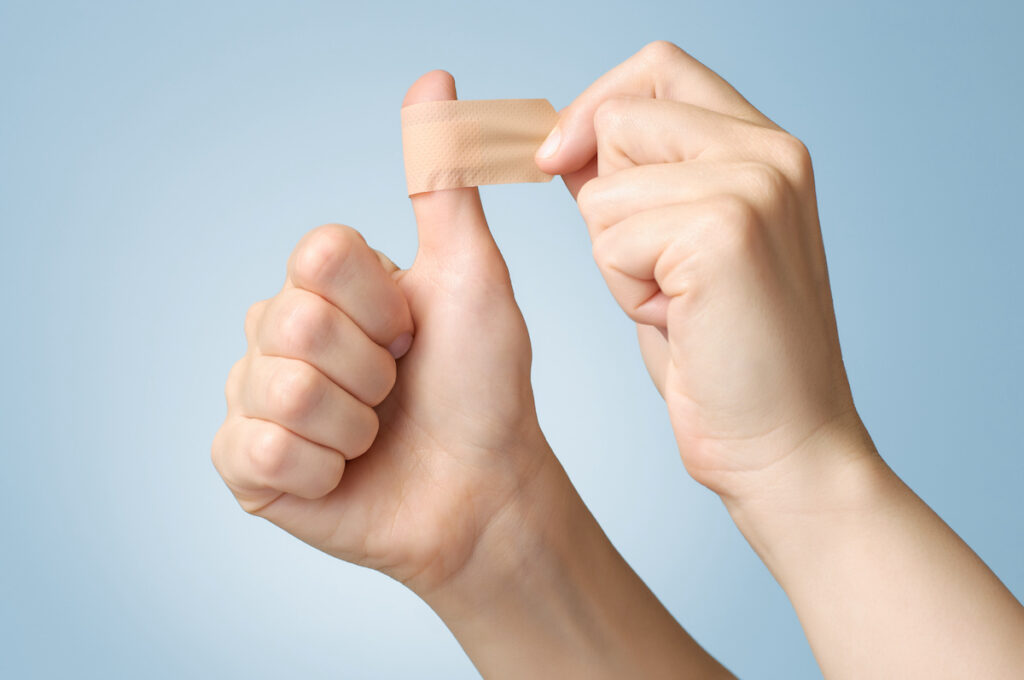
Cuts, scrapes, and burns can happen to anyone. Luckily, small injuries like these are easy to manage at home with the right wound care items on hand. While you should see a doctor if your wound is particularly severe, minor cuts and burns can be treated easily in the comfort of your own home. Read on for useful DIY wound care tips for when you have minor cuts, abrasions or burns.
What are the Common Types of Wounds?
Wounds come in many different shapes and sizes. They also come in varying levels of severity. In this blog, we are only addressing minor wounds. These DIY wound tips only apply when you are not in serious danger from your wound.
Some of the most common types of wounds that may happen at home include:
Cuts and scrapes – these are by far the most common types of wounds. There are many kinds of cuts and scrapes, including cuts from falling on broken glass or other sharp objects, paper cuts, and other minor abrasions from everyday activities.
Burns – don’t underestimate the power of a burn. Burns are injuries caused by heat on the skin. These can be very painful and difficult to heal.
Bites and stings – wounds caused by bites or stings like bees, spiders, or poisonous snakes can be very dangerous and must be treated by a medical professional.
Avoid Infection by Washing Your Hands Before Treatment
Before treating your wound, it’s important to practice proper wound care hygiene. Always wash your hands before treating any injuries. Using clean water, soap, and a clean towel, thoroughly clean your hands and forearms before touching your wound.
The CDC recommends washing your hands for at least 20 seconds before treating a wound. Beyond just washing your hands, it’s important to sterilize any tools you use for wound care. Be sure to clean the wound tools before and after caring for your wound.
How to Clean a Wound
In this case, we are addressing clean wounds, or a Class I wound. This means there’s no signs of infection or inflammation. Still, it’s important to clean all wounds, even the “clean” ones.
Here is how to wash properly clean a wound:
- First, wash your hands and the area around your wound with clean water and a clean towel. If your wound is bleeding, apply pressure with a clean towel to stop the bleeding.
- Next, use soap and water to clean around your wound.
- Do not place soap directly in the wound, but you can use soap to clean around it. Soap in the wound will hurt and may irritate the cut.
- Be careful not to scrub too hard, as this could cause irritation and increase your risk of infection.
- Rinse the wound with water to clear it from dirt and debris. Use tweezers if necessary, but be sure to clean the tweezers with isopropyl alcohol.
- Refrain from using hydrogen peroxide and rubbing alcohol to clean your wound. This is because alcohol and peroxide can remove good bacteria that will prolong your healing.
Wound Care Tips: Antibiotics and Petroleum Jelly
As we mentioned above, it’s important to know that a small cut or scrape doesn’t need antibiotics unless it’s a deep wound or you’re at risk of infection. An example is if you have a weak immune system.
Wounds that don’t need antibiotics may be treated with a topical antibiotic ointment. For example, you can use an antibiotic ointment such as Neosporin.
For cuts and scrapes, you can also use an over-the-counter product with petroleum jelly to protect the wound. Petroleum jelly acts as a protective barrier that helps keeps bacteria out.

Use the Right Wound Bandages
When treating a wound, you should apply an appropriate dressing. Depending on the size, location and depth of your wound, you can apply a gauze pad, band-aid, or dressing.
- If the wound is bleeding, apply pressure with a clean towel to stop the bleeding.
- When the wound is bleeding heavily and you’re unable to stop it with a clean towel, go to the closest emergency room.
- Gauze pads are great for minor wounds. For larger wounds, you may need a dressing.
- If you’re treating a burn, follow the specific dressings and treatment instructions provided by your doctor or healthcare professional.
There are many types of wound bandages available that specialize in different wound types. You’ll find gauze dressings, transparent films, and foams. Selecting the appropriate wound bandage is important for healing, so make sure you know what type of wound you’re treating before you choose a bandage. If you are unsure of the correct type of bandage, your pharmacist or family doctor can provide suggestions.
What are the Signs of a Wound Infection?
One of the most important things to watch for when treating a wound is signs of infection. If your wound develops the following, it’s important to seek out medical attention:
- You smell a foul odor
- The wound becomes red and swollen
- A wound’s surrounding area becomes warm to the touch
The sooner you treat an infection, the easier it is to treat and the less damage it can do to your body. Depending on how serious your infection is, you might receive antibiotics to help treat your infection.
If you notice signs of infection, it’s important to clean your wound again and change your wound bandage. Beyond that, you can try an at-home treatment like an ice pack to help reduce the swelling and pain of the infection. If your infection is serious, you may need to go to the emergency room for treatment.
When Should You Go to the Hospital for a Serious Wound?
Sometimes you can treat a cut or wound at home, but sometimes you can’t.
Here are some scenarios where you need to go to the hospital or urgent care to get help with your wound:
- If you’ve sustained a deep wound that’s bleeding heavily, or you’re not sure how to properly clean and treat the wound, you may want to visit an emergency room for treatment.
- When you have diabetes and cut yourself, it’s important to monitor your wound closely.
- If you don’t feel well or have other medical conditions, it’s important to go to the hospital for treatment.
- In general, it’s best to visit the hospital if you’re not sure how to treat your wound, or if you’re worried about how serious the wound is.
- Get medical attention if the wound is jagged, gaping, or there is numbness and puss.
DIY Wound Care Tips: Get Wound Bandages and More from Palm Harbor Pharmacy
Basic wound supplies are important to have in your medicine cabinet. No one wants to find themself with a cut, abrasion or burn without wound supplies available.
Luckily, you can get wound bandages and more from your local Palm Harbor Pharmacy. Our pharmacy has everything you need for wound care, including many different types of wound dressings and antibiotic ointments. If you have questions about these DIY wound care tips, please visit the pharmacy or give us a call.